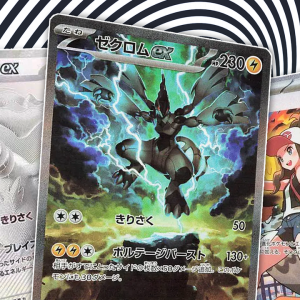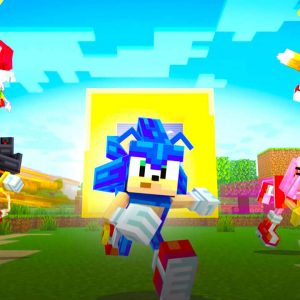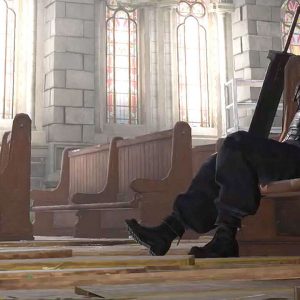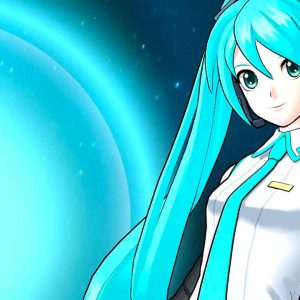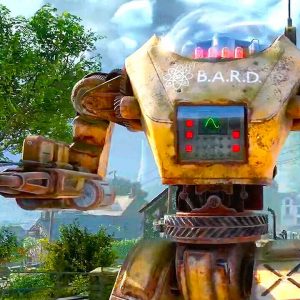SPOILER WARNING! These hands-on impressions won’t go into story details, but they will be discussing the structure, new mechanics, and themes of Celeste
Chapter 9. Be warned if you’d prefer to go into it blind.
It’s hard to tell if Celeste Chapter 9 has some of the game’s hardest levels yet, or if a year and a half of accumulated rust from not playing is just slowing me down. I’m willing to bet it’s a bit of both, but this free expansion to an already incredible game is a blast either way.
IGN has the first 8 minutes of Celeste chapter 9, which you can watch in the video above.
Chapter 9, titled Farewell, will be added to Celeste on all platforms tomorrow, and it feels a little bit like like a bite-sized sequel in some respects. It tells a mostly contained story that picks up after the base game and introduces plenty of new mechanics while also remixing some previous ones in clever ways.
Of course, it’s not really a sequel, something developer Matt Thorson tells me they aren’t interested in making, but it’s still meatier than you might expect from an unceremonious, free content update dropping nearly two years after launch. And even though so much time has passed, the new levels arriving in Chapter 9 still manage to introduce some of this game’s most clever mechanics, wonderfully difficult and satisfying screens, and loveliest music to date.
Chapter 9 will likely take all but the best players 2-3 hours to beat, structured a bit like an A-side and a B-side mixed into one continuous level. The first half introduces a load of interesting new mechanics before a mid-chapter break shakes Farewell up – from that point on, things get a little nutty.
“
This chapter features Celeste’s only explicit, guided tutorial, one that teaches you to “wavedash” in a truly hilarious way I won’t spoil. Wavedashing is a mechanic that has already been highly utilized by speedrunners, but isn’t strictly necessary to use in any levels before now. It involves dashing diagonally into the ground and then jumping, which will launch you across the screen while still leaving you with a mid-air dash to use (if you time everything properly, that is).
What was just a cool speedrunning trick before is a mandatory-to-learn technique for the second half of Chapter 9, and forcing players to master the wavedash has allowed the Celeste team to make some its coolest levels yet. While the first half is mostly new ideas, the second spends a lot of its time revisiting old ones, mixing and remixing obstacles from past chapters in clever ways and then cranking the difficulty up by sprinkling in wavedashes.
Quite frankly, this is some of the most fun I’ve had in Celeste. These levels just rule. They are clever, hard, and satisfying – free from the story, mechanic, or themeing restrictions laid out in each Chapter before this, but with just as much thought and care put into them. I’ll admit that it’s slightly disappointing that Chapter 9 has no strawberries to collect, but that’s because strawberries were mostly used to offer additional challenge to a chapter’s A-Side. Chapter 9 follows the B-Side model, where every screen is a strawberry-level challenge of its own.
Apart from the wavedash being formally introduced and the nuttiness that comes from combining the signature obstacles of other chapters together (like attaching Chapter 3’s tendrils to moving blocks), the actual new mechanics that have been added are winners too. The two most notable ones are a blowfish that will bounce you from the top but blow you away from the bottom and a jellyfish glider.
What’s most impressive about these new toys is that they aren’t just more stuff. They actively make space for new types of puzzles we haven’t really seen in Celeste before, despite being relatively familiar to interact with. The blowfish will move down when you bounce on it and gets pushed around by springs, resulting in puzzles where you have to manipulate them into the right position to then blast off from. One screen even reminded me a bit of Portal’s infamous Companion Cube level as you guide a single blowfish all the way through to the end.

Meanwhile, the glider is a grabbable item, similar to Theo’s crystal in Chapter 5, that slows your descent while holding it. This results in wacky new moments like throwing a glider past an obstacle to grab later on, or throwing it mid-air and then dashing and grabbing it again for an upward boost. Thorson told me that mid-air movement like this is a theme of Chapter 9, and that focus does a good job of setting it apart from the rest.
One downside of this increased in-flight mobility, however, is that it can occasionally be more confusing to figure out how to even get through a screen at all. This wasn’t a big problem by any means, but I caught myself staring at levels wondering “what the heck am I even supposed to do here?” rather than “I know what to do, I just need to do it” more often than in the base game. Gliding through open-air (especially coupled with the enhanced mobility of the wavedash) seemed to occasionally require more empty space, which could result in less of a visual guide than Celeste usually gives you – but, again, that was only in select screens, and finding the solution to those tricky puzzles has always been just as much a part of the challenge as executing them.
“
As far as story, I won’t get into spoilers, but Chapter 9’s takes a somewhat lighter touch than the base game. Since it’s just one Chapter, there’s less time to tell this contained epilogue’s story, but there’s still more here than Chapter 8, and it’s even looped into the mechanics in amusing ways at times. Chapter 9’s message manages to be both a little bit sparser and a little more overt than the main story, but it’s still as genuine and as relevant as ever – and it’s one I appreciate Celeste sharing in the honest, show-don’t-tell way it’s so good at.
The setting it’s told in also doesn’t hurt. The dreamlike space-meets-ocean-floor aesthetic is potentially less focused than previous chapters, but given the intentional chaos of what’s happening around and within Madeline that’s probably not an accident. The music is also just as fantastic as always, with multiple new tracks to soothe your my temper as I mistimed a jump for the millionth attempt.

Ultimately, Chapter 9 is exactly what I wanted: a fresh reason to go back to Celeste. As you could probably tell from the two-digit number I gave it in my review last year, I really love Celeste, and getting a new chunk of challenging, creative, and overwhelmingly satisfying levels to conquer so long after its release is a bit of a dream come true. If this is the end of Celeste after all, then it’s a fond Farewell indeed.
Chapter 9 will be released for free on all platforms tomorrow, and Thorson tells me their team has already moved onto its next game. You can read my full interview with them here for more insights on some of Chapter 9’s new mechanics, why they aren’t making a Celeste sequel, and what they are working on next.
Tom Marks is IGN’s Deputy Reviews Editor and resident pie maker. You can follow him on Twitter.

